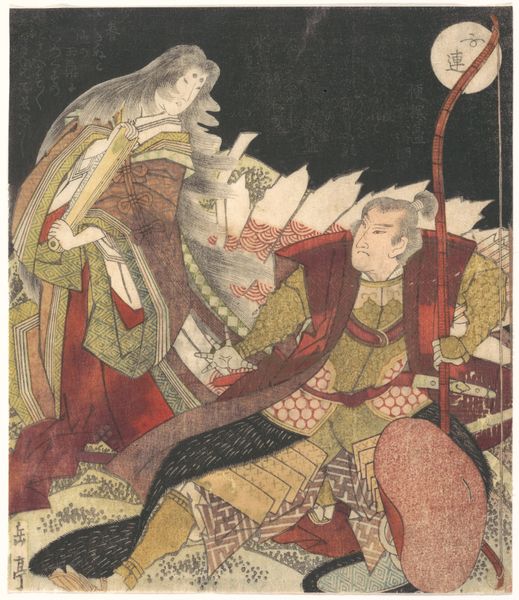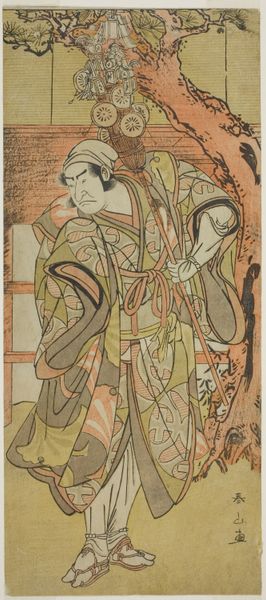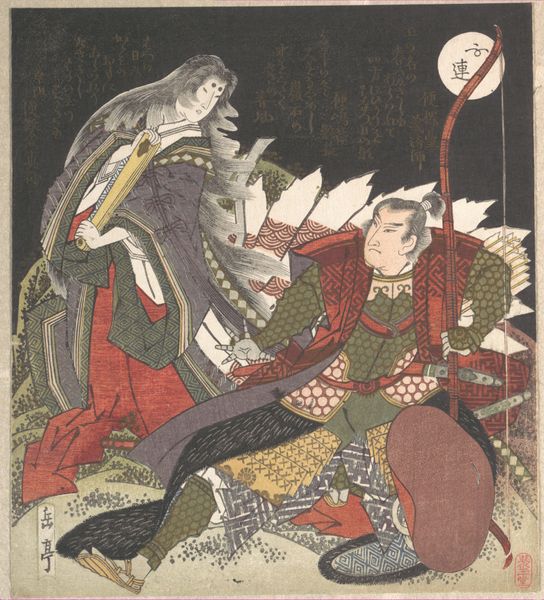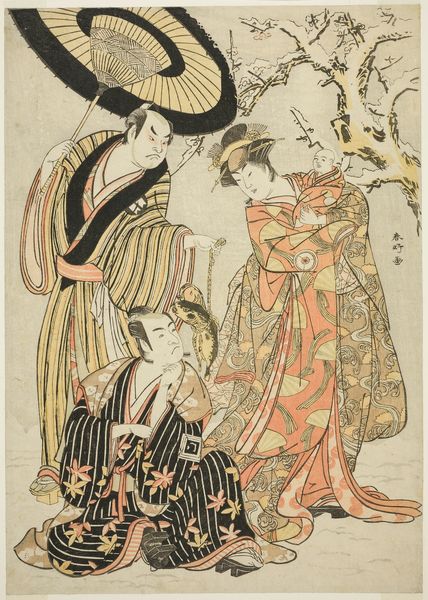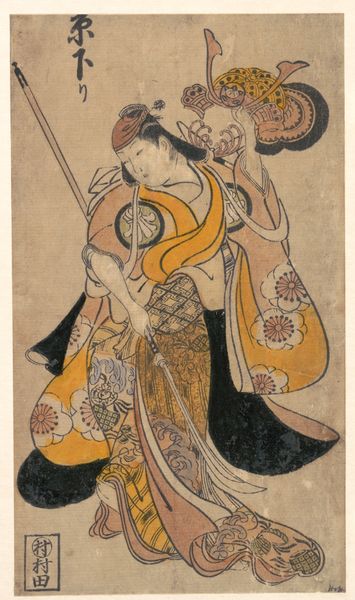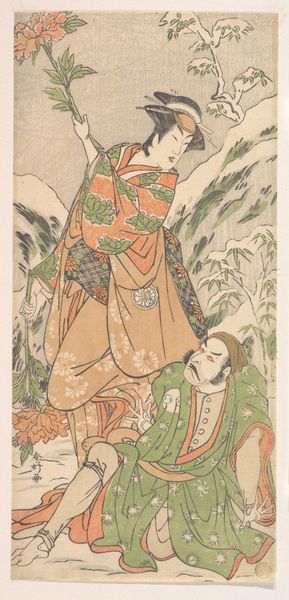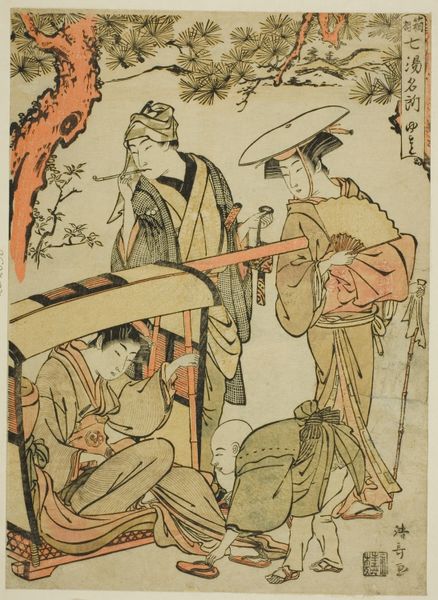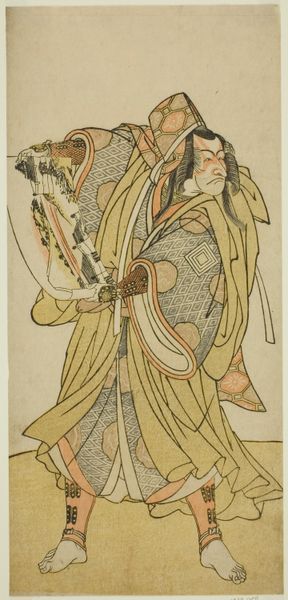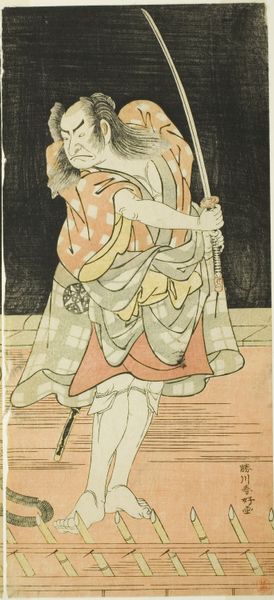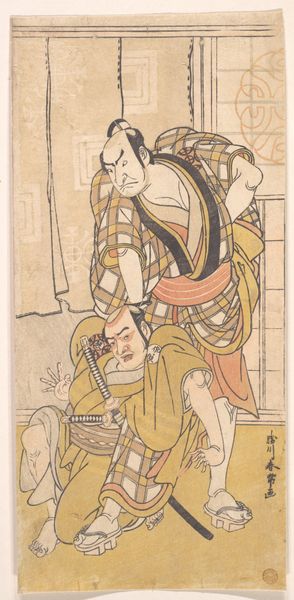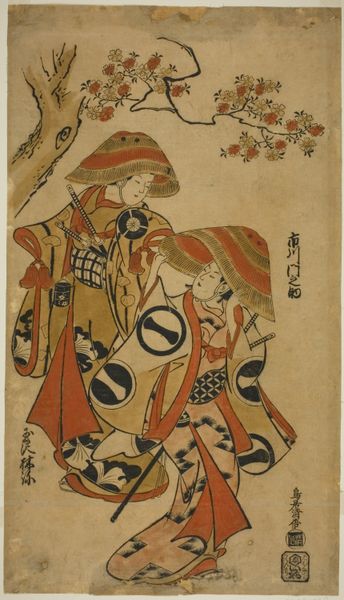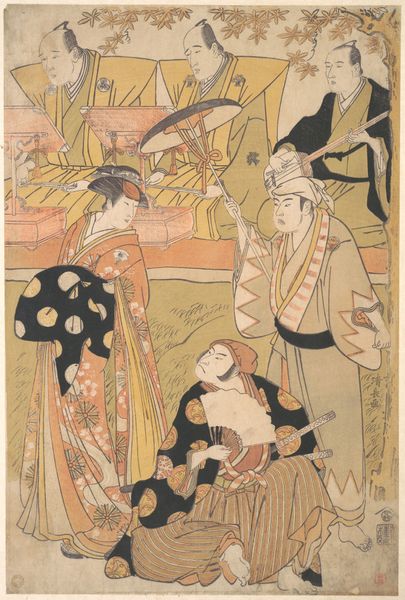
The Actors Ichikawa Raizo II as Kojiro Masahira (right) and Ichikawa Danzo IV as Doi no Yataro (left), in the Play Kaomise Ama no Iwato, Performed at the Nakamura Theater in the Eleventh Month, 1774 c. 1774
0:00
0:00
print, woodblock-print
#
ink painting
# print
#
asian-art
#
ukiyo-e
#
japan
#
figuration
#
woodblock-print
Dimensions: 29.6 × 13.7 cm (11 5/8 × 5 3/8 in.)
Copyright: Public Domain
Curator: Let's discuss this captivating woodblock print dating to around 1774 by Katsukawa Shunko, presently housed at The Art Institute of Chicago. It depicts the actors Ichikawa Raizo II and Ichikawa Danzo IV in the play "Kaomise Ama no Iwato". What are your initial impressions? Editor: There's an undeniable tension etched onto their faces. The man leaning on the bucket seems to bear the weight of the world, while the other's gaze holds a sense of conflicted resolve, perhaps shame or guilt. Is it meant to convey a dramatic or moralistic meaning through its cultural context? Curator: Precisely! Shunko uses very deliberate compositional strategies to amplify those emotions. Notice the diagonal line created by the backdrop, contrasting against the slumped posture of Ichikawa Danzo IV, and the precise geometry and repetition of forms in their patterned robes, highlighting structure amidst the chaotic emotional expression. Editor: And what about the symbols? I am particularly interested in the bucket itself, clearly positioned centrally between the two figures, is it the vessel for remorse perhaps? Water cleanses, and in the Kabuki plays, transformations through water feature commonly... Curator: A sound reading! Water, purification, and atonement – all potent symbols within Japanese cultural contexts, perfectly integrated with the conventions of Ukiyo-e. The way Shunko uses the minimal colour palette enhances the raw feeling - there is a strong earth tone which I would associate to melancholy... Editor: Exactly, the symbolic load is huge, a visual story that would deeply resonate with the play's audience. It transcends mere entertainment. But on the surface of what meets the eye first, Shunko successfully captures complex interiority with such simplicity of line and limited coloration... quite elegant actually. Curator: Indeed, the interplay between line, form, and symbolic content underscores its artistic merit. Considering Shunko's meticulous attention to form, we're reminded of how formal artistic structures create layers of deeper meaning and artistic sophistication. Editor: Seeing past its aesthetic attributes and getting to these historical performance symbols reveals cultural values. That’s a lot of information in a seemingly basic print, an opening to an interesting reflection, I dare say.
Comments
No comments
Be the first to comment and join the conversation on the ultimate creative platform.
